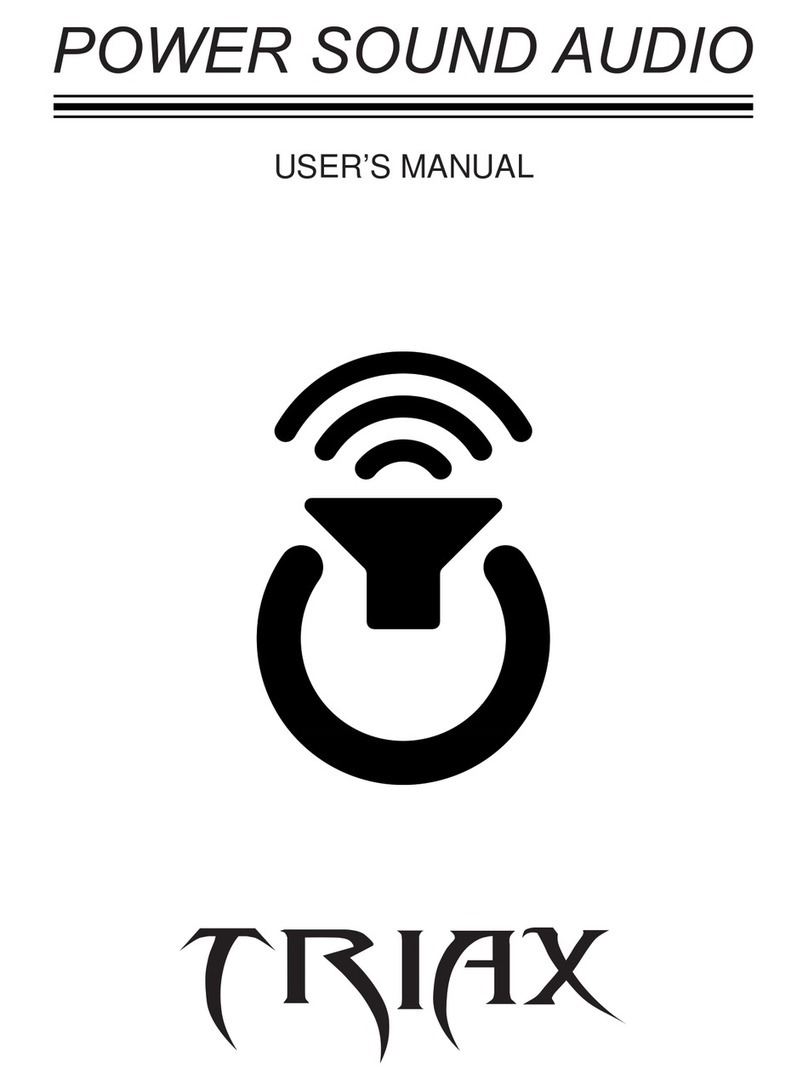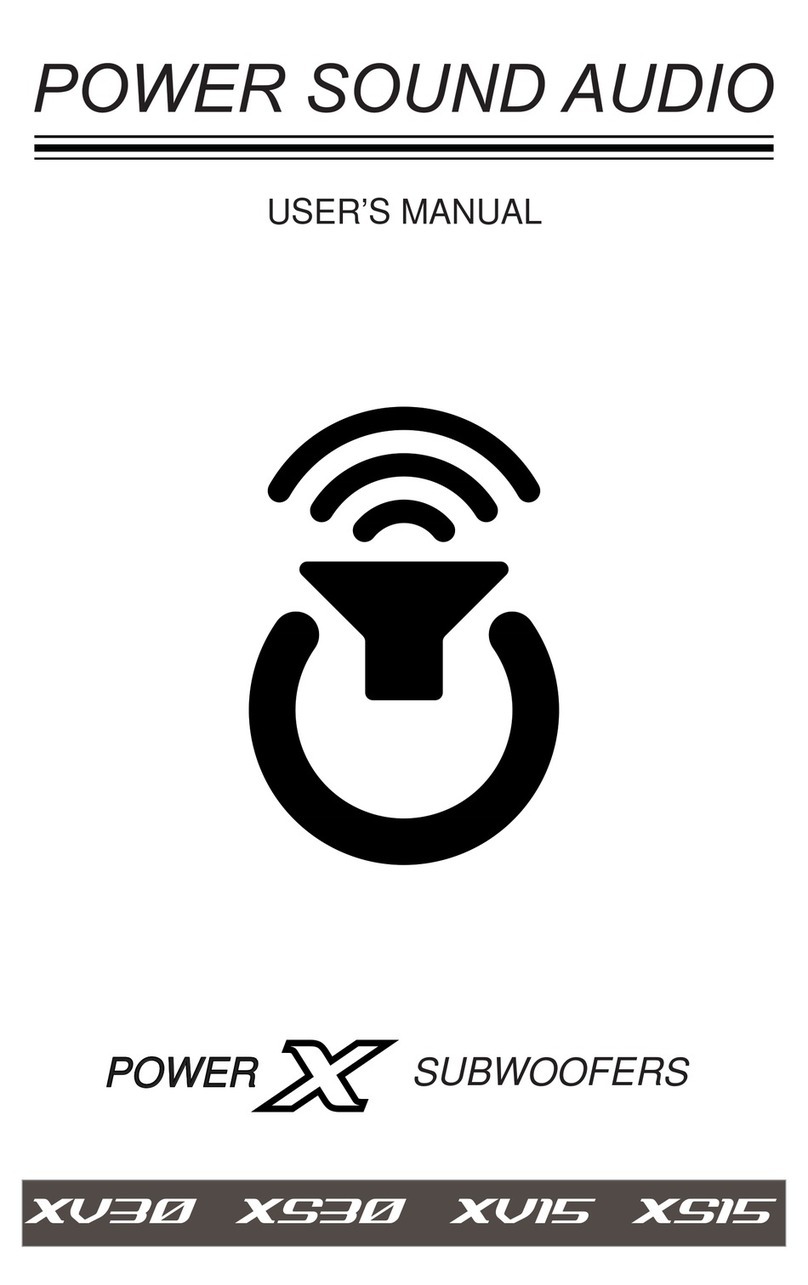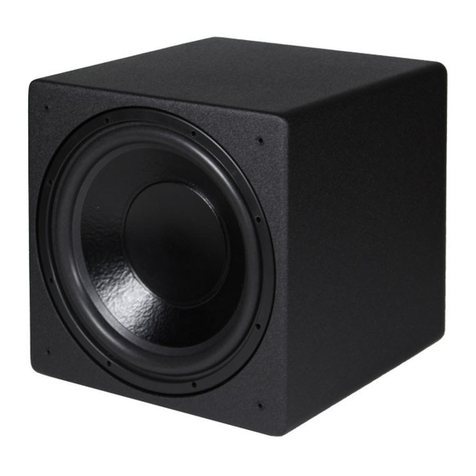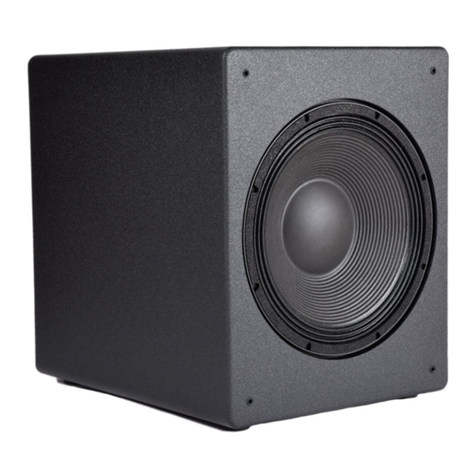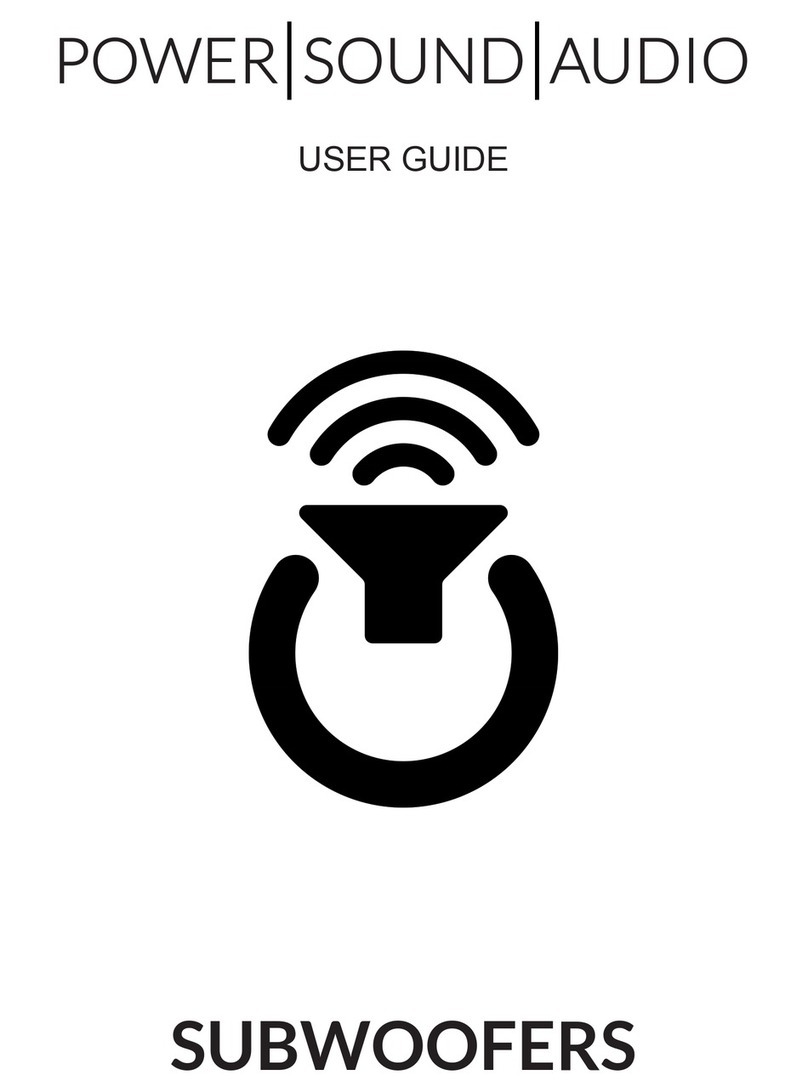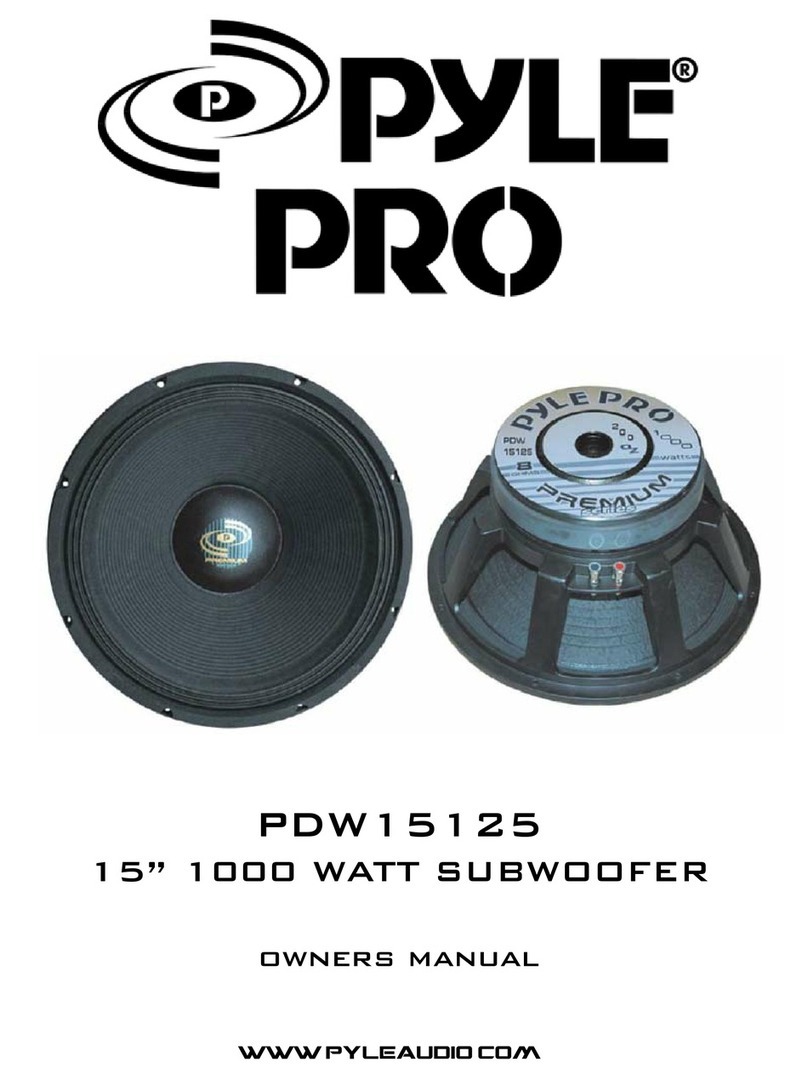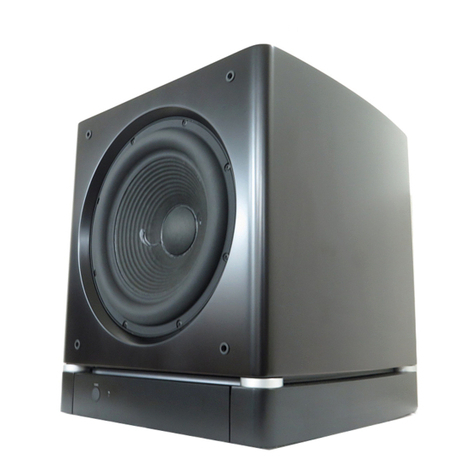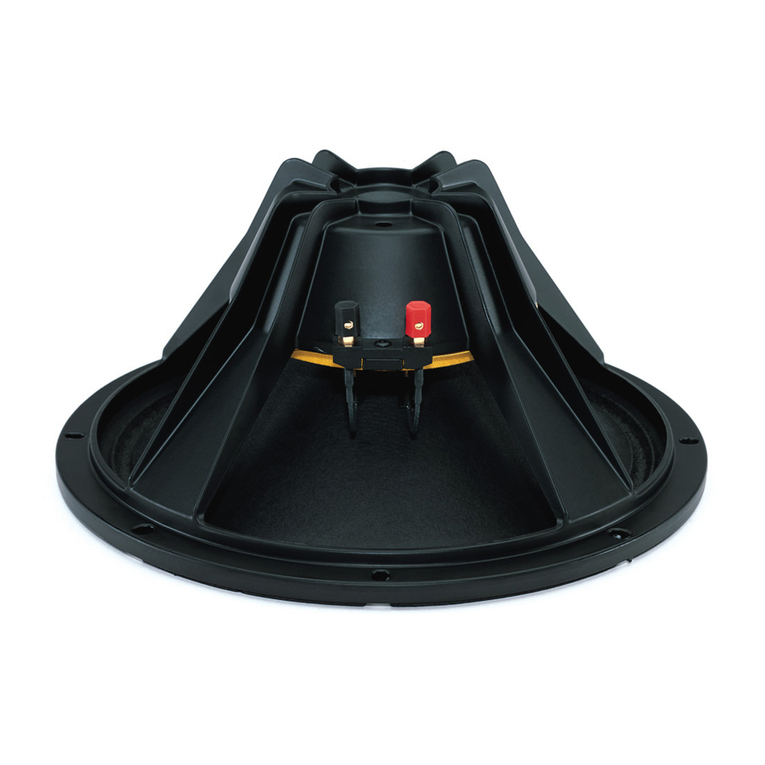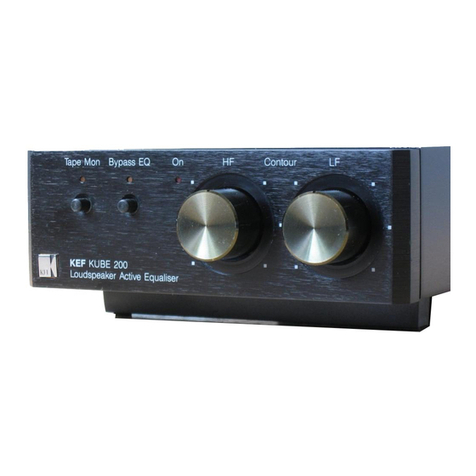
IMPORTANT SAFETY INSTRUCTIONS
1. Read Instructions - All safety and operating instructions should be read before the
subwoofer is operated.
2. Retain Instructions - The safety and operating instructions should be retained for
future reference.
3. Heed Warnings - Adhere to all warnings on the subwoofer and in the operating instruc-
tions.
4. Follow Instructions - All operating and use instructions should be followed.
5. Water and Moisture - The subwoofer should not be used near water. Examples: near a
bathtub, kitchen sink, in a wet basement, near a swimming pool or similar areas.
6. Carts and Stands - The subwoofer should only be used with a cart or
stand recommended by the manufacturer. When a cart is used, use
caution when moving the cart/subwoofer combination to avoid injury
from tip-over.
7. Ventilation - The subwoofer should be situated so that its location or position does not
interfere with its proper ventilation. Do not place the subwoofer in a cabinet or book-
case that may impede the fl ow or air through ventilation openings.
8. Heat - The subwoofer should be situated away from heat sources such as radiators,
heaters, heat registers, stoves, or any other device that produces heat.
9. Power Sources - The subwoofer should be connected to a power supply only of the
type described in the operating instructions or as marked on the subwoofer.
10. Power Cord Protection - Power supply cords should be routed so they are not likely
to be walked on or pinched by items placed upon or against them, paying particular
attention to cords at plugs, convenience receptacles, and the point at which they exit
from the subwoofer.
11. Cleaning - The subwoofer should only be cleaned with a dry cloth.
12. Non-Use Periods & Lightning Storms - The power cord of the subwoofer should be
unplugged when left unused for a long period of time or during a lightning storm.
13. Caution - Do not defeat the safety purpose of the polarized or grounding-type plug.
A polarized plug has two blades with one wider than the other. A grounding type plug
has two blades and a third grounding prong. The wide blade or the third prong are
provided for your safety. If the provided plug does not fi t into your outlet, consult an
electrician for replacement of the obsolete outlet.
14. Object and Liquid Entry - Care should be taken so that objects do not fall and liquids
are not spilled onto the subwoofer.
15. Only use attachments/accessories specifi ed by the manufacturer.
16. Damage Requiring Service - The subwofer should be serviced by qualifi ed service
personnell when: the power supply cord or plug has been damaged, objects have
fallen or liquid has been spilled into the subwoofer, the subwoofer has been exposed
to rain, the subwoofer does not appear to operate normally or exhibits a change in
performance.
17. Servicing - The user should not attempt to service the subwoofer beyond what is
described in this manual or manufacturer supplied instructions.
